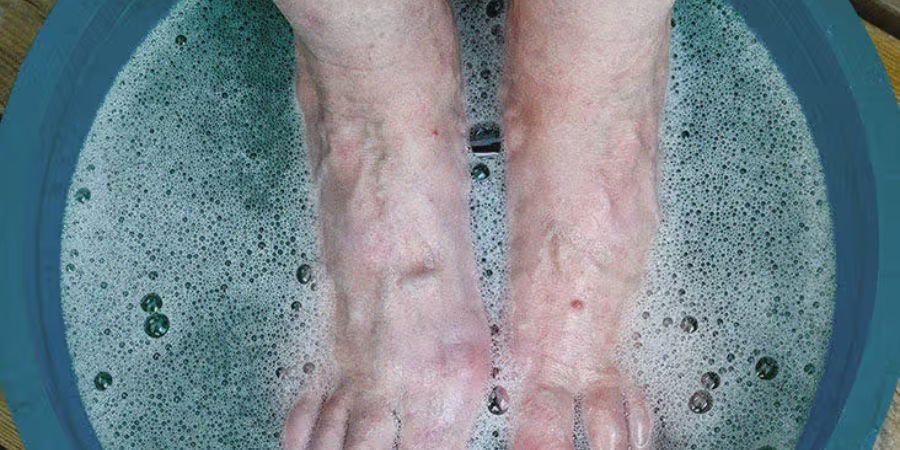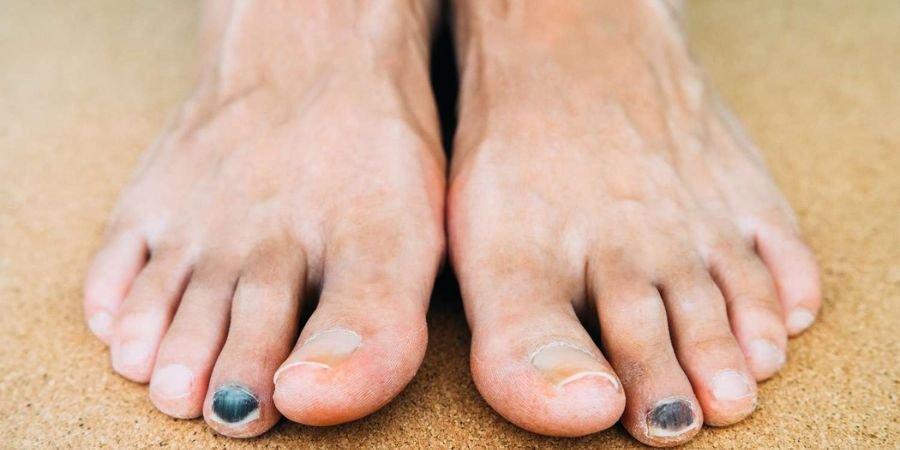What Causes a Black Toenail?
The black toenails are often a source of anxiety however, they’re usually the result of simple reasons. Most often, the cause for the condition is injury or trauma in the area of your toenail. It could be caused by activities such as running, scrubbing your toe, or closed-toe footwear. The black toenails could also result from fungal infections or more grave conditions such as Melanoma. It is essential to identify the reason for the dark toenail to determine the most effective solution. In this article, we will discuss various reasons and solutions for black nails.
Importance of Diagnosing the Cause
If you see a black nail, it’s important to identify the source. The majority of black toenails aren’t the result of simple wounds but some could be a sign of more serious problems with health, such as yeast infections diabetes, or melanoma. A proper diagnosis will help avoid problems and provide appropriate treatment. A black nail that is not treated can result in worsening health issues so being aware of your health, and seeking proper medical treatment is vital.
Causes of Black Toenail
Trauma and Injury
Most often, the cause of the black nail is trauma or an injury. It can happen after you accidentally knock your toe over or smash it against a smooth object. The pressure can trigger blood to gather under the nail, which can cause the appearance of a purple or dark discoloration. If the wound is severe, it could result in the toenail becoming loose, or it may even fall off. Though it is painful most injuries that cause black toenails heal as time passes.
Fungal Infections
Fungal infections are the second leading cause of toenails that are black. The toenail may become colored, thicker, and dry due to an invasion of fungal bacteria. This is most often the case in humid and warm conditions like in shoes, particularly in the case of sweaty feet or damage to your nails If untreated these fungal infections could result in further problems like pain, and spread into different toes.
Underlying Medical Conditions (e.g., Diabetes, Anemia)
In certain instances, black nails may indicate health issues. For instance, people who suffer from diabetes may have a lower blood flow making the nails vulnerable to infection and injuries. Anemia, a condition that results in a lack of blood-red cells could affect the appearance of your nails. If you have a health issue and notice nails that appear dark, you need you consult with a physician to get the appropriate treatment.
Melanoma
While it’s not as common Melanoma, which is a kind of skin cancer can result in nail polish turning black. If you observe the appearance of a dark part of your nail, which doesn’t result from injuries, it could be a sign of Melanoma. It is essential to take immediate medical care if you think you are suffering from Melanoma because prompt detection of Melanoma is crucial to treating it.
When to See a Doctor

Indications for Professional Help
Although many black toenails heal in their own time there are times when medical assistance is required. If the toenail gets extremely painful, has been associated with swelling, or detects signs of infection you should consult an expert. If the dark toenail has been caused by an injury that doesn’t heal in a short period the doctor will be able to assess the issue and assist in preventing the damage from getting worse.
Self-Diagnosing vs. Medical Advice
There’s a temptation to diagnose an uncolored toenail, but it’s best to be cautious. Although fungal and trauma can be the cause of most cases, more serious illnesses, such as melanoma may manifest in the same fashion. Medical advice is essential to ensure that you are treated appropriately and avoid grave effects.
Possible Complications
Spread of Infection
An infection can be a major concern when a toenail becomes black result of trauma or fungal infection. An injury that is not severe can be infected and cause further problems such as abscesses and cellulitis. If the infection goes untreated, it may become spread throughout the body and cause greater health complications. That’s why timely medical attention is essential.
Misdiagnosis of Melanoma
As melanoma is a type of cancer that can be a symptom of diseases, there’s the possibility of getting it wrong. If you’ve noticed a black toenail that’s not improving or exhibits unusual traits, for example, dark streaks or an unsymmetrical appearance, you must consult a medical professional. The wrong diagnosis of melanoma could delay the treatment process, therefore early recognition is vital.
Treatment Options
Home Remedies for Fungal Infections
If you notice a dark toenail caused by a fungal infection, homemade remedies are often able to ease the signs. Vinegar feet soaks or creams that fight fungal infections, as well as maintaining the feet clear and dry are a few options to manage the infection. But, you must follow these treatments with caution and seek out a physician if signs persist.
Medical Treatments for Severe Cases
In the case of severe black toenails, particularly those resulting from trauma or fungal infection Medical treatment may be needed. The doctor can prescribe oral antifungal medication or, in cases of injury, carry out methods to eliminate any fluid beneath the toenail. If you suspect that melanoma is early the treatment should be considered and a biopsy may be necessary to identify the root cause.
Treatment for Trauma-Related Black Toenails
If the black nail is due to injury, the treatment is focused on relieving pain and preventing infections. Elevating your foot, and then applying Ice can lessen swelling. If you notice that there is fluid underneath the nail, an expert may remove it. In some instances, there may be a need for the nail to be taken off to speed up the healing process.
Outlook and Prognosis

Recovery from Trauma
If your toenail has a black color due to injury, the majority of cases will heal within a few weeks. After healing it may remain discolored when properly cared for the discoloration will gradually disappear. When the nail falls off the nail, a new one is usually formed on its own.
Managing Underlying Conditions
If you have black toenails due to an underlying condition such as anemia or diabetes, taking care of the problem is vital for preventing future instances. AProperfoot hygiene, good circulation of blood, and addressing the root cause of health issues will reduce the chance of developing new black toenails.
Prevention Tips
Preventing Trauma:
- Well-fitted shoes will help you avoid any friction or pressure on your feet.
- Pay attention to your surroundings so that you don’t get stung by your toes.
- Take part in sports and activities using suitable footwear that is supportive of healthy feet.
Foot Hygiene to Avoid Fungal Infections:
- Cleanse your feet frequently and dry them completely particularly between toes.
- Refresh your socks regularly, especially if your feet sweat.
- Make use of antifungal sprays or powders if you are susceptible to fungal illnesses.
Proper Footwear and Care:
- Select shoes with breathable mesh that permit the flow of air to help keep your feet dry.
- Be sure that your shoes aren’t overly snug to avoid injuries to the nails.
- Select socks with moisture-wicking properties to ensure your feet are dry and to prevent the growth of fungal infections.
Vinegar Foot Soak Remedies

Benefits of Vinegar for Foot Health
Vinegar, particularly vinegar made from apple cider, is renowned for its antibacterial and antifungal qualities. Soaking your feet in vinegar is a great method to reduce the risk of fungal infection. It can also help speed up the healing process and minimize the irritation resulting from black nails as a result of fungal infection.
How to Make a Vinegar Foot Soak
For bathing your feet you could mix 1 tablespoon vinegar and 2 cups of water which is warm. Soak your feet for 15-20 minutes daily. If you’re suffering from an illness that’s caused by fungal spores it is also possible to include a few drops of oil that are important to your health, for example, tea tree oil. Additionally, it has natural antifungal benefits.
Conclusion
The black toenails, though typically harmless, can be a sign of a bigger problem. If you can identify the source of the issue of the problem, be it an injury, infection, or something greater, like melanomas for instance, you’ll be able to take the appropriate steps to stop and stop this in the event of. See a physician if you’re unsure of the source of your black nail to ensure that you don’t get any problems. If you can take care of it most toenails that are black will heal over some time. Strategies to avoid them will ensure your feet’s health and protect you from problems in the future.
FAQs
Q: Do black nails get better in their own time?
A: Absolutely, the majority of nail blacks caused by injuries or trauma will be healed on their own, with appropriate care.
Q: What can I do if my dark toenail is the result of an infection of the fungal type?
A: If you think you may have an infection caused by fungal organisms, you can try the over-the-counter treatment for fungal infections or talk to an expert for guidance.
Q: For how long does it take for a toenail with a dark color in its growth
A: Typically, it requires several weeks for a toenail that is black for it to heal, and possibly longer for the new nail to completely grow.
Q: Do you think a black toenail is an indication of Melanoma?
A: Not all black nail polishes are the result of injuries or infections. However, melanoma must always be taken into consideration if the coloration is not normal or does not heal.
Q: How do I stop black nail polish from appearing?
A: Wearing shoes that are well-fitted and maintaining a healthy foot as well as addressing underlying issues will help to prevent black nail polish.
For more information go to home page
